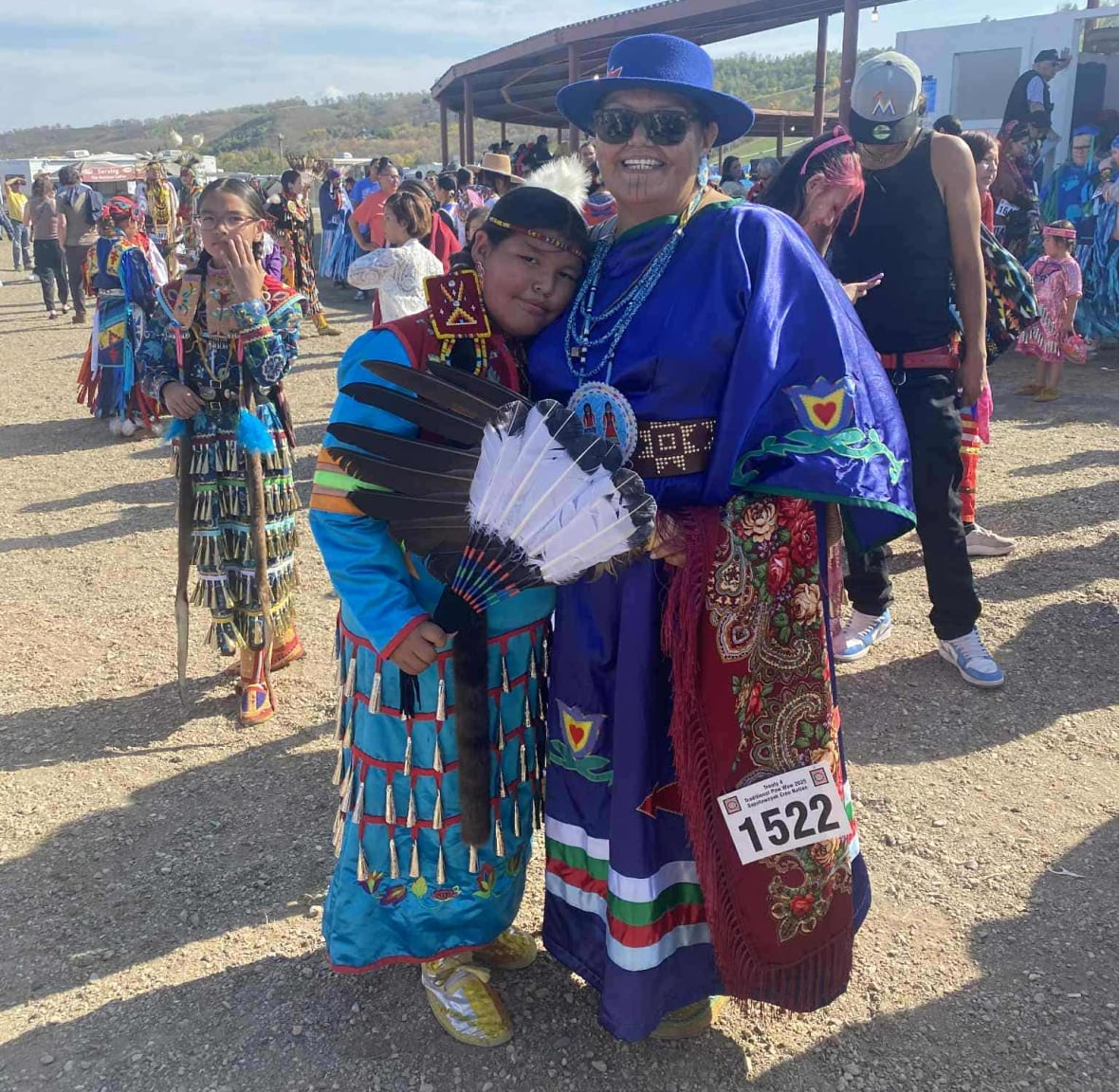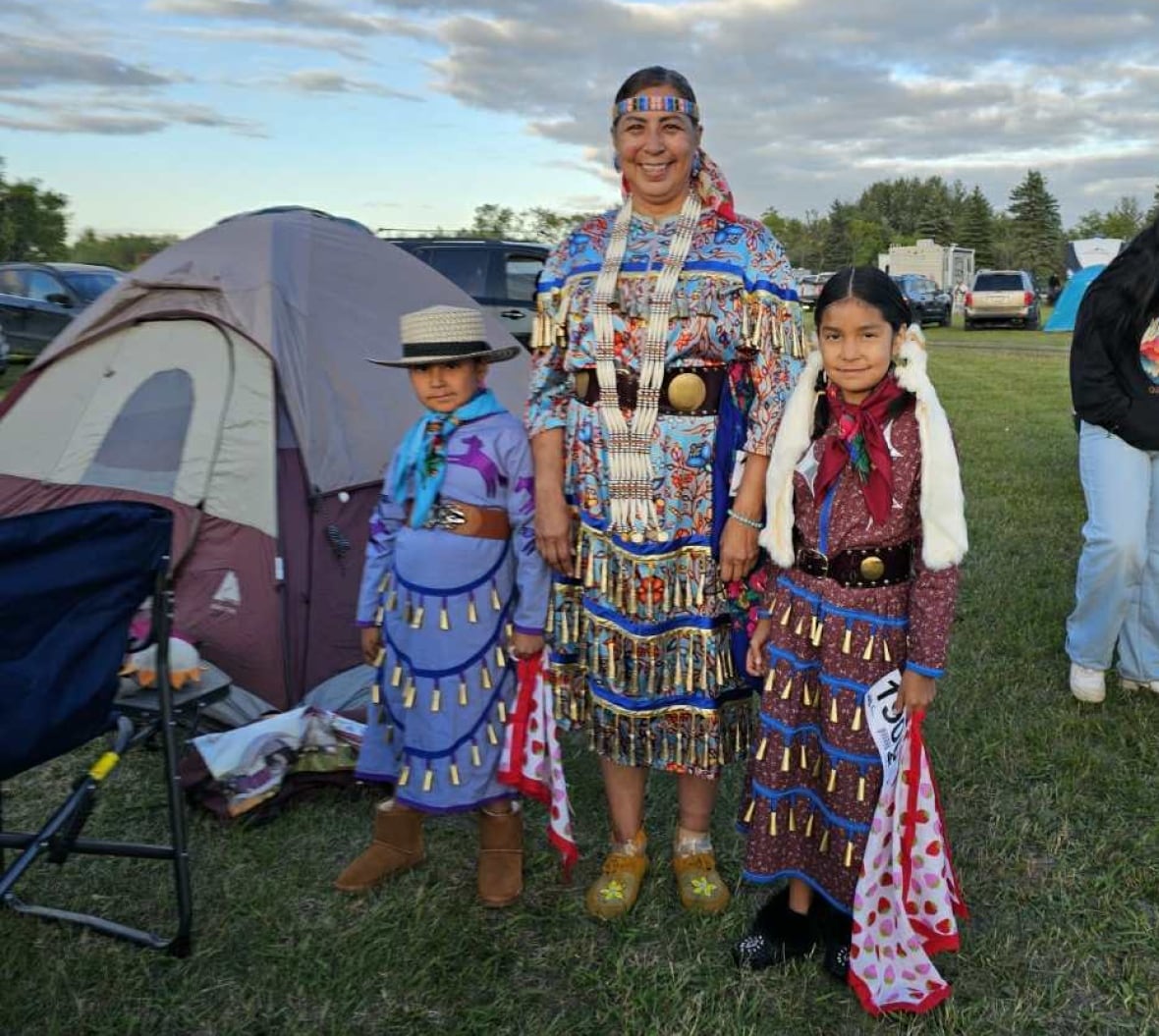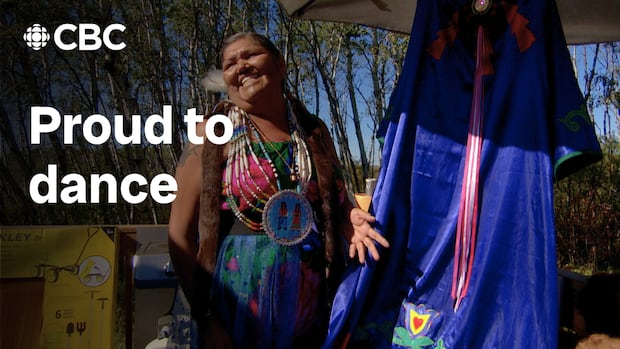Starla Starblanket danced women’s traditional, dressed in full regalia, for the first time in nearly 50 years earlier this month.
“[I] found a sense of personal identity when I braided my hair, when I put that regalia on and I took my place in line there,” said Starblanket, 55.
Starblanket is a residential school survivor from Starblanket Cree Nation in Saskatchewan. She rejoined the powwow circle with new regalia that was made in time for the Treaty 4 Gathering powwow in Fort Qu’Appelle, Sask., about 70 kilometres northeast of Regina, Sept. 20-21.
When Starblanket was a girl, she saw a beautiful white dress hanging on a vendor table at a powwow, with shiny red beads. Her dad got her the dress after gathering enough money to buy it.
But her dancing journey came to a halt when she went to Qu’Appelle Indian Residential School at age seven.
Starblanket said she didn’t know there would be obstacles in her journey to reclaim that part of who she wanted to be.
Dancing despite surgery
In February 2023, Starblanket required knee replacement surgery.
“For about 25 years I walked on a crooked leg and my spine developed a curvature. They call that scoliosis and my left knee absorbed the brunt of these injuries to the point where it needed to be completely replaced,” said Starblanket.
“I felt that in my heart. It was very heartbreaking.”
Starblanket said her recovery from surgery was a lengthy process but with the help of her son she gained her strength back.
Starblanket knew it was time to dance but it’s not an easy thing to gather regalia. She said her family gave her a shawl, a beaded hat and a dagger for her belt.
“I was proud to take my place in line because it brought us together again,” said Starblanket.
“It gave me an opportunity to be tended by my sisters; to have my hair braided by my sisters.”

Starblanket said during a women’s dance special her leg started to give out and she started to dance offbeat. She closed her eyes and found the strength to keep going.
“I felt that I made it and that’s something that everybody, every Indigenous child should be entitled to but that was taken from us,” she said.
“So now as adults, we have to reclaim that and I reclaim that for that little girl that lives inside of me. That’s where my pride came from.”
‘They dressed me up’
Shelly Pinacie, from Muskowekwan and George Gordon First Nation, started dancing jingle to reclaim her identity as an Anishinaabe woman. She brought along her grandchildren on her healing journey.
Pinacie attended the Qu’Appelle Indian Residential School and the Muskowekwan Indian Residential School, from age six to 16. Pinacie said she grew up without her culture and felt an underlying shame of never feeling good enough.

Although she said she has always been in the powwow space as an observer, dancing in inter-tribals in her ribbon skirts and moccasins, she wanted to work on herself before entering the powwow circle.
“I didn’t know what was going on inside of here because trauma does things to your heart and your mind and your soul and when you don’t understand that, that’s when depression and suicide and addictions happens,” said Pinacie.
Pinacie said she learned about the story behind the jingle dress and the healing it does.
“Through this journey of mental, emotional, spiritual and physical healing, from my past and what can help my family heal forward, it was really the concept that the jingle dress is the healing and medicine dress,” said Pinacie.

Two residential school survivors take up powwow dance to heal
Starla Starblanket and Shelly Pinacie both turned to powwow dancing this year as a way to reclaim their cultures.
This past summer, Pinacie decided her first jingle dance would be in her own home community, Muskowekwan.
“I said, ‘All I have is a belt and a dress, my ceremonial moccasins. I don’t have anything fancy,'” Pinacie said.
“So they started taking pieces from their regalia and they put pieces on me. They put a headband on me. They put a scarf on me. They dressed me up and I felt like a Barbie doll that day.”
Pinacie said she wanted to bring her grandchildren to dance alongside her.
“They’re going to have that much of a head start on life because my role as a grandmother in my family, in my matriarchal family, my children and my grandchildren — that’s my place, to step up,” said Pinacie.
Pinacie said no matter what age you are, it’s OK to start something new.
“I don’t feel lost anymore,” she said.
“Once you have your identity, you have self-esteem. Once you have your self-esteem, you have your power. Once you have your power, you can do anything you want.”


